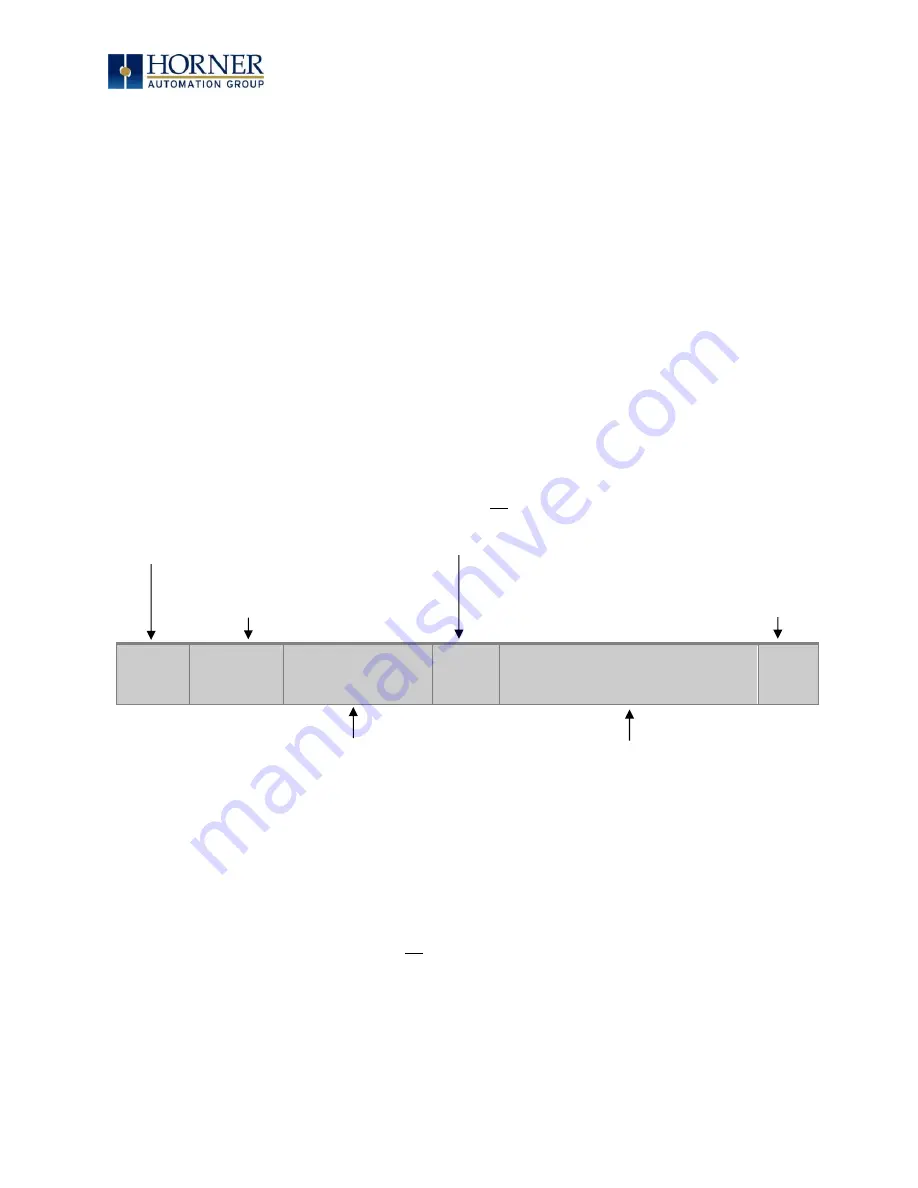
MAN1256-05-EN_EXLW_XLWP_UM
November 10, 2021
61 | 201
CHAPTER 7: CSCAPE CONFIGURATION
7.1
Overview
EXLW/XLW PRIME OCS hardware is programmed with a Windows based PC application called
Cscape. This application can be used to program, configure, monitor and debug all aspects of
the EXLW/XLW PRIME OCS unit. Please see the on-line help provided with Cscape for additional
details.
7.2 Cscape Status Bar
When the EXLW/XLW PRIME OCS is connected to a PC using Cscape software, a Status Bar
appears at the bottom of the screen. The Cscape Status Bar can be used to determine if
communications have been established between the EXLW/XLW PRIME OCS and the Cscape
program. Components of the Cscape Status Bar are explained below.
Ready
User:
HE-EXLW/XLW
PRIME-CsCAN
(Model=)
Equal
Local :1 Target :2(R) [no forces] MOD
Figure 7.1 - Cscape Status Bar
Equal Indicator
–
indicates whether the current program in Cscape is equal to the program
stored in the Target Controller.
•
If
Equal, the program in Cscape is the same as the program stored in the Target Controller.
•
If
Not Equal, the program in Cscape is not the same as the program stored in the Target
Controller.
•
If Unknown, there may have been a change since the last time the program in Cscape was
compared to the Target Controller.
Communications Status - indicates the current status of the
“pass through” Connector.
•
Local: xx
–
indicates the Network ID of the OCS to which
the Cscape program is physically connected through its
serial port. It can serve as a pass through device to other
nodes on the network.
•
Target: yy(R)
–
indicates the Network ID of the device with
which the Cscape program is exchanging data.
NOTE: The Local unit and Target unit can be the same
unit, or they can be separate units.
The following are status indicators:
(R)
–
Running
(D) - Do I/O
(I)
–
Idle
(?)
–
Cscape is not communicating with the remote unit.
[no forces]
–
indicates no I/O has been forced.
Message Line -
The contents of
these messages
are context
sensitive. The
Message line can
be empty.
Current User -
indicates who is logged
(for security purposes).
Controller Model - Network (Model Confirmation)
•
Controller Model indicates the controller model for
which the program in Cscape is configured.
•
Network indicates the type of network that the
program in Cscape expects to use (e.g., CsCAN).
•
(Model Confirmation) provides the following
indications:
•
(Model=) - the actual Target Controller matches the
configured Controller Model and Network.
•
(Model Not=)
–
the actual Target Controller does not
match the configured Controller Model and Network.
•
(Model ?)
–
there may have been a change since the
last time the Target Controller was compared to the
configured Controller Model and Network.
File Modified Indicator - indicates that
the file in the selected window has
been modified but has not been saved.
















































